Welcome to my kitchen! Today I'm sharing one of my favorite discoveries from my travels to Cebu: Tuslob Buwa. This unique dish literally means "dip into bubbles" and that's exactly what makes it so fun to eat!
Imagine a richly flavored, bubbling mixture of savory ingredients where you dip hanging rice (puso) or regular steamed rice for an interactive dining experience unlike any other. I fell in love with this Cebuano street food delicacy during my first visit and had to recreate it at home.
The combination of pork brain and liver creates an amazingly creamy sauce with deep umami flavors that will transport you straight to the bustling streets of Cebu. Don't be intimidated by the exotic ingredients, I've broken down every step to make this authentic Filipino dish accessible and delicious.
Get ready to impress your family and friends with this conversation-starting dish that's both delicious and an experience to remember!
What is Tuslob Buwa?
Tuslob Buwa is a beloved street food from Cebu, Philippines. The name literally translates to "dip into bubbles" in Cebuano, which perfectly describes how this dish is eaten. Tuslob means "dip" and Buwa (or Bula) means "bubbles."
This interactive dish features a simmering mixture of pig's brain, liver, and spices that creates bubbles while cooking. Traditionally served with "puso" (hanging rice wrapped in coconut leaves), diners dip their rice into the bubbling mixture while it's still cooking over low heat.
Originally popular in Cebu's Pari-an district, this humble dish has grown in popularity and can now be found throughout the city at various establishments, including all-day eateries like Azul Tuslob Buwa on Escario Street.
Jump to:
Why You'll Love This Recipe
Tuslob Buwa is the ultimate Cebuano comfort food that brings together bold flavors and an interactive dining experience unlike any other. You'll love this dish because it combines rich, savory ingredients into a bubbling delicacy that's meant to be shared.
The combination of pork brain and liver creates a creamy, umami-packed sauce that perfectly coats each bite of rice.
This dish isn't just food, it's a cultural experience that connects you to Cebu's vibrant culinary heritage!
Ingredients
The ingredients in Tuslob Buwa aren't just random choices - they're the secret to its unique flavor and texture. Pig's brain creates that signature creamy consistency while the liver adds a rich depth that can't be matched.
The salted shrimp brings a punch of umami that enhances everything else. Onions provide a sweet aromatic base, and the cornstarch slurry is essential for creating those trademark bubbles that give the dish its name. While these may seem unusual to some, they're traditional elements that Cebuanos have perfected over generations.
Each component plays a vital role in creating that authentic street food experience that keeps people coming back for more.
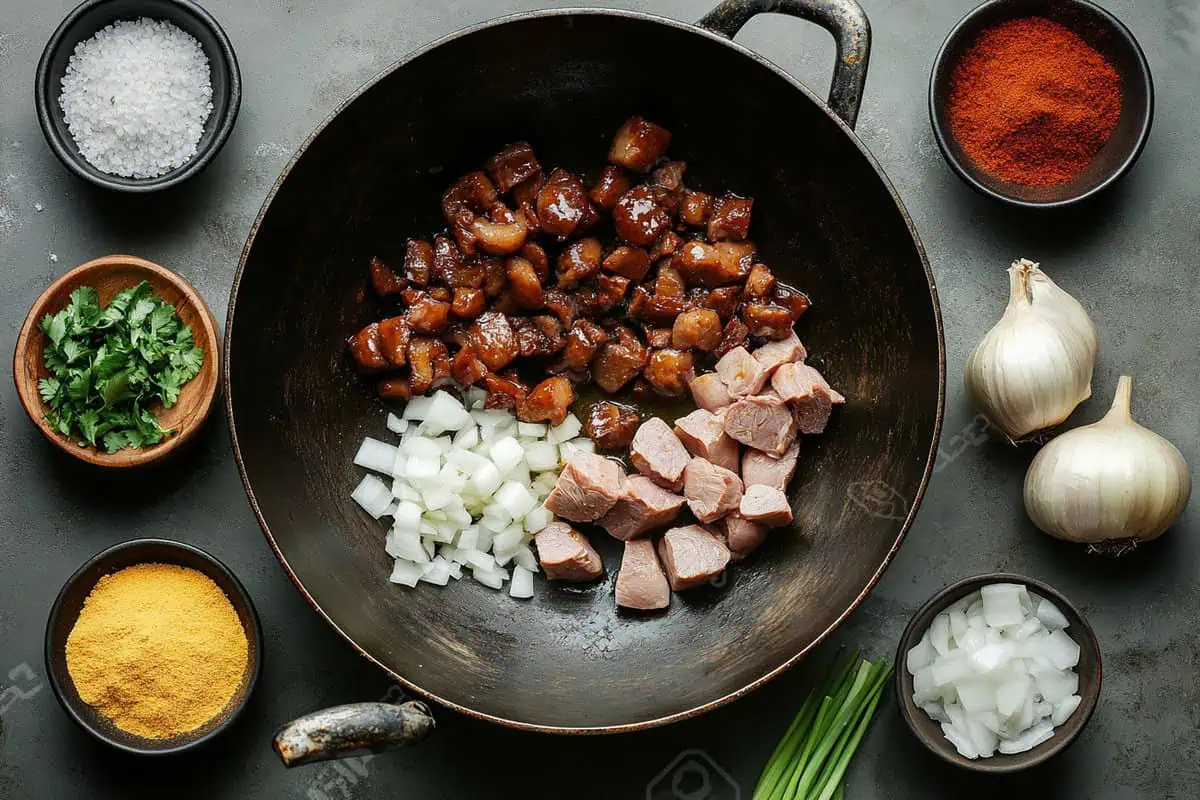
- 3 tablespoons cooking oil
- 1 medium onion, finely minced
- 2 tablespoons salted shrimp (alamang)
- 1 cup pig's brain, cleaned and chopped
- ½ cup pig's liver, finely diced
- 2 tablespoons cornstarch dissolved in ¼ cup water
- Salt and pepper to taste
- Optional: soy sauce, chopped chilies, calamansi
- Puso (hanging rice) or steamed white rice for serving
Equipment
- Wok or deep frying pan
- Wooden spatula or ladle
- Knife and cutting board
- Measuring spoons
- Small bowl for cornstarch slurry
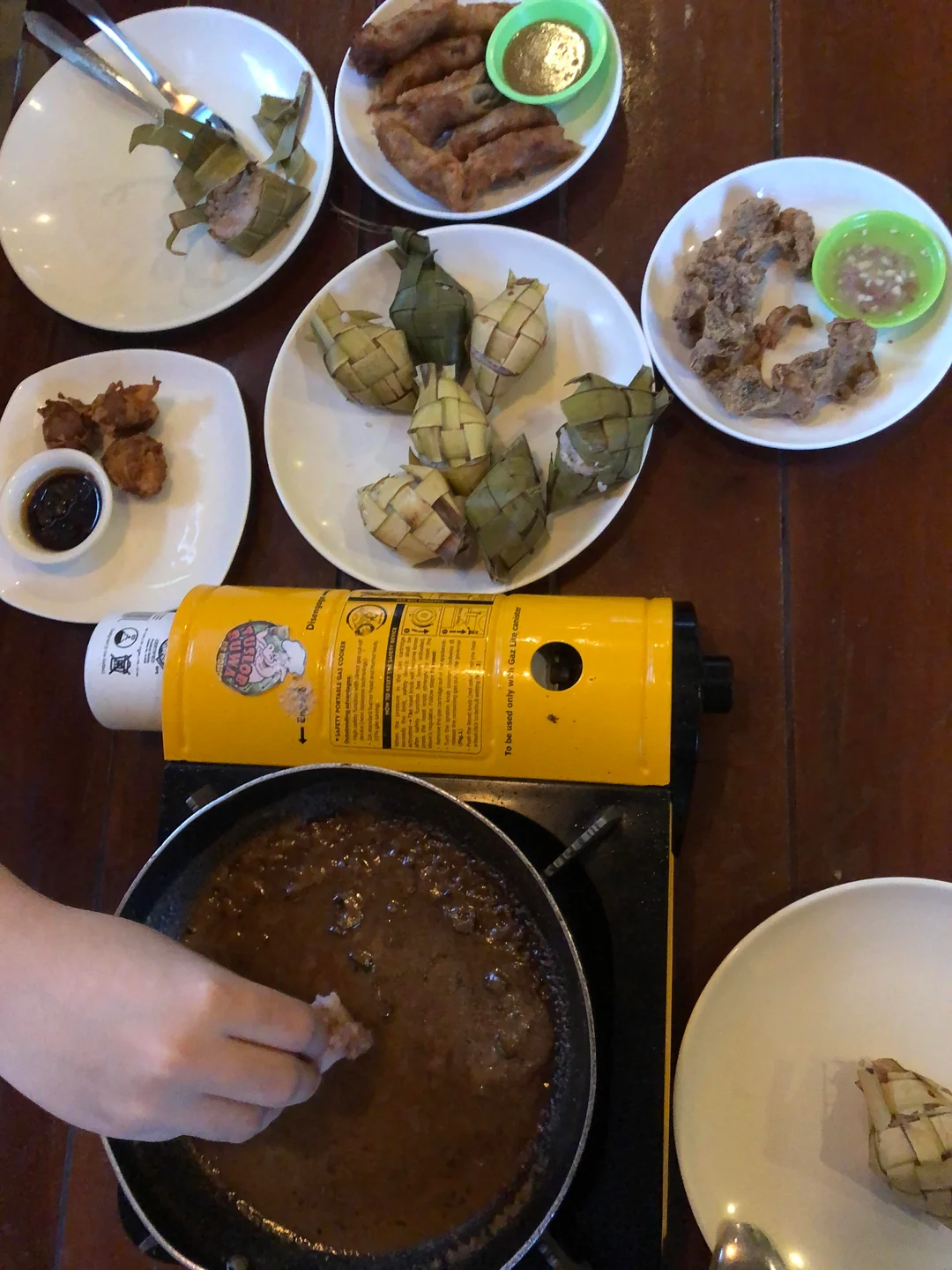
How To Make
- Heat oil in a wok or deep frying pan over medium heat.
- Add the minced onions and sauté for 30-60 seconds until fragrant but not browned.
- Add the salted shrimp (alamang) and stir-fry for another 30 seconds to release the flavors.
- Add the pig's brain and cook for about a minute, breaking it up with your spatula as it cooks.
- Mix in the diced pig's liver and continue cooking for 2-3 minutes until the liver is no longer raw.
- Pour in the cornstarch slurry while stirring continuously. This will thicken the mixture and create the characteristic bubbles.
- Season with salt, pepper, and other optional seasonings to taste.
- Reduce heat to low and keep the mixture simmering. The bubbling texture is now ready for dipping!
- Serve immediately with puso (hanging rice) or steamed white rice for dipping.

Tips from Lola's Kitchen
- Perfect texture: The ideal Tuslob Buwa should be slightly thick but still have a creamy, saucy consistency. If it's too thick, add a little water; if too thin, mix a bit more cornstarch with water and add gradually.
- Fresh ingredients: For authentic flavor, use the freshest pig's brain and liver you can find. Visit your local wet market early in the morning for the best quality.
- Flavor boost: Add a splash of fish sauce or a spoonful of chili garlic paste for an extra dimension of flavor that complements the richness of the dish.
- Cooking temperature: Keep the heat low after adding all ingredients to maintain the bubbling effect without burning the mixture.
- Serving suggestion: Traditional ceramic or clay serving dishes help maintain the temperature longer for the best dipping experience.
Substitutions
- Can't find pig's brain? While not traditional, you can substitute with chicken liver pâté mixed with a bit of beaten egg for a similar creamy texture.
- No salted shrimp? Use fish sauce or bagoong (fermented shrimp paste) as alternatives that provide similar umami notes.
- Vegetarian option: Create a mushroom-based version using finely chopped shiitake and oyster mushrooms with nutritional yeast for umami flavor.
- Liver alternatives: If you're not a fan of liver, you can use more brain or substitute with finely minced pork or chicken thigh meat.
- Cornstarch substitute: Tapioca starch or rice flour can work as thickening agents if cornstarch isn't available.
Troubleshooting
- Mixture burns easily: Your heat may be too high. Always cook Tuslob Buwa over low to medium heat, especially after adding all ingredients.
- Too runny: If your mixture isn't thickening properly, add more cornstarch slurry, but add it gradually to avoid over-thickening.
- Bitter taste: This could be from overcooking the liver. Add a bit of sugar or calamansi juice to balance the flavor.
- No bubbles forming: Make sure your pan is hot enough before adding ingredients, and stir frequently to encourage bubble formation.
- Unpleasant smell: Fresh ingredients are key. If there's an overly strong smell, add more aromatics like garlic or ginger to help balance it.
Storage & Reheating
- Refrigeration: Tuslob Buwa is best enjoyed fresh, but leftovers can be stored in an airtight container in the refrigerator for up to 2 days.
- Freezing: Not recommended as the texture significantly changes after freezing.
- Reheating: Warm gently in a pan over low heat with a splash of water to restore some moisture. Stir continuously to prevent burning and to recreate some of the bubbling texture.
- Preparation ahead: You can prep ingredients in advance, but cooking should be done just before serving for the authentic experience.
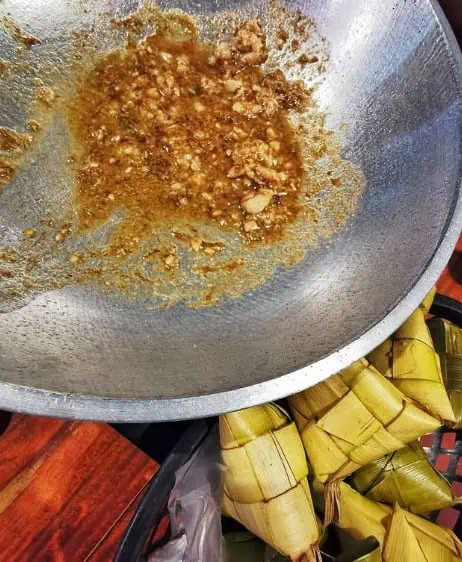
FAQ
Is Tuslob Buwa healthy?
While delicious, Tuslob Buwa contains ingredients high in cholesterol and uric acid, particularly the pig's brain. It's best enjoyed in moderation, especially if you have gout or other health concerns.
Can I make this at home, or is it better to try it at a restaurant first?
If you're unfamiliar with handling organ meats, trying it at a restaurant like Azul Tuslob Buwa is recommended before attempting to make it at home.
What's the best time of day to eat Tuslob Buwa?
Traditionally, it's enjoyed as a late afternoon or evening meal, but places like Azul serve it throughout the day.
Can children eat this dish?
While there are no strict restrictions, the rich nature of the ingredients might be too heavy for young children.
How do I eat Tuslob Buwa properly?
Take a piece of puso or rice, dip it into the bubbling mixture while it's still hot, and enjoy immediately. It's meant to be an interactive, communal dining experience.
Where can I find the best Tuslob Buwa in Cebu?
Azul Tuslob Buwa on Escario Street is open 24/7, making it accessible anytime. The Pari-an area is known for traditional stalls, with Papart's being frequently recommended by locals, though these typically open later in the day.
What makes authentic Tuslob Buwa special?
The combination of fresh ingredients, proper cooking technique to create bubbles, and the social experience of sharing the dish are what make authentic Tuslob Buwa special.
Can I adjust the spice level?
Absolutely! Add chopped chilies or hot sauce according to your preference. Traditional Tuslob Buwa can be made mild or spicy based on personal taste.
Related
Looking for other recipes like this? Try these:
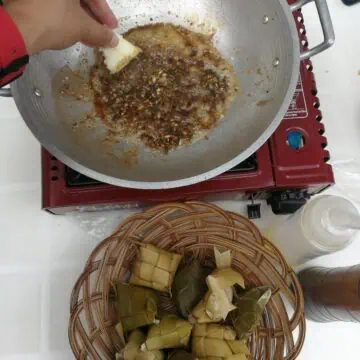
Tuslob Buwa: Cebu's Famous Street Delicacy
Ingredients
- 3 tablespoons cooking oil
- 1 medium onion finely minced
- 2 tablespoons salted shrimp alamang
- 1 cup pig's brain cleaned and chopped
- ½ cup pig's liver finely diced
- 2 tablespoons cornstarch dissolved in ¼ cup water
- Salt and pepper to taste
- Optional: soy sauce chopped chilies, calamansi
- Puso hanging rice or steamed white rice for serving
Instructions
- Heat oil in a wok or deep frying pan over medium heat.
- Add the minced onions and sauté for 30-60 seconds until fragrant but not browned.
- Add the salted shrimp (alamang) and stir-fry for another 30 seconds to release the flavors.
- Add the pig's brain and cook for about a minute, breaking it up with your spatula as it cooks.
- Mix in the diced pig's liver and continue cooking for 2-3 minutes until the liver is no longer raw.
- Pour in the cornstarch slurry while stirring continuously. This will thicken the mixture and create the characteristic bubbles.
- Season with salt, pepper, and other optional seasonings to taste.
- Reduce heat to low and keep the mixture simmering. The bubbling texture is now ready for dipping!
- Serve immediately with puso (hanging rice) or steamed white rice for dipping.
Tips from Lola's Kitchen
The Story Behind Tuslob Buwa
Walking through the bustling streets of Cebu City, particularly in the historic Pari-an district, you'll discover one of the Philippines' most unique culinary treasures - Tuslob Buwa. This iconic Cebuano street food has humble beginnings that reflect the resourcefulness and creativity of Filipino cuisine.
Tuslob Buwa emerged as a working-class dish decades ago when ordinary Cebuanos sought affordable yet satisfying meals. The name itself tells the story of how it's eaten - "tuslob" means to dip and "buwa" refers to bubbles, describing the action of dipping hanging rice (puso) into the bubbling mixture. This interactive eating style has made it not just a meal, but a communal experience that brings people together.
Originally, Tuslob Buwa was created as a way to utilize all parts of the pig, demonstrating the Filipino tradition of "nose-to-tail" cooking long before it became trendy in modern cuisine. Local vendors would set up simple stoves on street corners where customers could gather around a shared pan of the bubbling mixture, each person dipping their rice into the communal pot. This fostered a sense of camaraderie among strangers who became temporary dining companions.
The dish found its first home in Cebu's Pasil and Pari-an areas, neighborhoods known for their vibrant street food culture. Vendors would typically appear in the late afternoon and serve hungry customers well into the night. What started as an economical meal option quickly developed a cult following for its distinctive rich flavors that couldn't be found in more conventional Filipino dishes.
Today, Tuslob Buwa has evolved from its strictly street food origins. Modern eateries like Azul Tuslob Buwa have brought this legendary dish into more formal dining settings, making it accessible to tourists and those who might be hesitant to try street food. These establishments have helped preserve this culinary tradition while adapting it to contemporary tastes and health standards.
Despite its growing popularity, the essence of Tuslob Buwa remains unchanged - it's still about simple ingredients transformed into something extraordinary, and the joy of sharing food in the most direct way possible. Each bubbling pot tells the story of Cebu's cultural heritage, economic ingenuity, and the Filipino spirit of making something special from humble beginnings.
Whether you're exploring the authentic street food stalls of Pari-an or enjoying an elevated version in a modern restaurant, Tuslob Buwa offers more than just flavors - it provides a taste of Cebuano history, community, and culinary innovation in every dip.
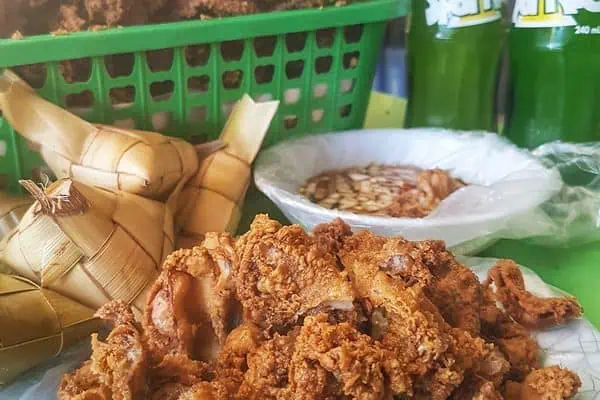








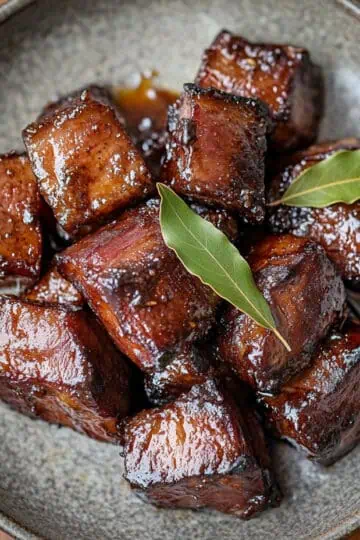
Comments
No Comments